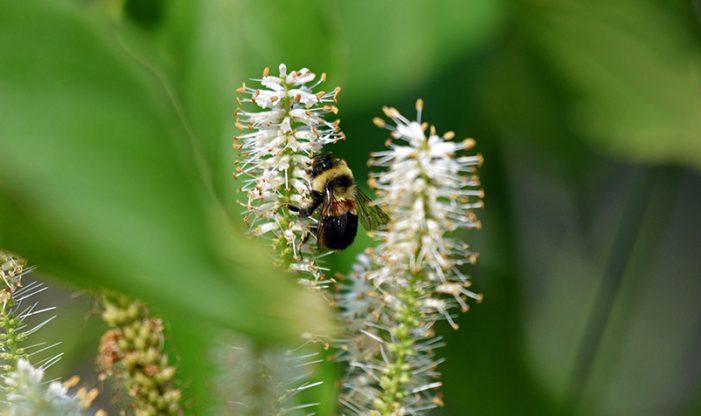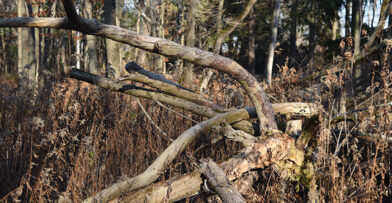At Schlitz Audubon, and in Milwaukee as a whole, our land has gone through several iterations of human use over the past centuries. Just as the way we choose to spend our days becomes how we spend our lives, the ecosystem we cultivate creates the world we inhabit. Nature preserves like Schlitz Audubon offer us the opportunity to implement Aldo Leopold’s land ethic: “A thing is right that tends to increase the integrity, stability and beauty of the land, and its wrong if it tends otherwise.”
A Guide to Revitalization
The Schlitz Audubon Conservation Plan is our guide to revitalizing these 185 acres with greater integrity, stability, and beauty. The land is the basis of everything that we do, so every day we work together to improve it. Conservation at Schlitz Audubon is supported by this dynamic, thoroughly researched, and proactive strategy.
Just as the land lives
and constantly evolves,
so does our Conservation Plan.
We use science to measure, catalogue, and quantify our impacts. Because it’s important that we find ways to learn from our successes and our failures, we’ve developed a more quantifiable conservation ethic based on Leopold’s original: “A thing is right that tends to increase biotic diversity and ecosystem function, and it’s wrong if it tends otherwise.” Through this lens, we have created a plan that can measure our success in addressing the Center’s paramount environmental concerns, including Emerald Ash Borer (EAB) and other invasive species, stormwater runoff and ravine erosion, and habitat creation for species of greatest conservation need.
To combat EAB and other invasives, we work diligently to control them and the ecological damage they cause, and in their place plant flora that supports native and migratory wildlife. To stem storm water runoff and ravine erosion, we plan to disrupt ditches and drain systems installed when this land was a farm. We will also improve the function of our wetlands, and create new ponds to moderate the flow of storm water into vulnerable forested ravines.
Supporting Vulnerable Species
We will also create habitat to support species of greatest conservation need, such as our 20 bird species of greatest concern, as well as the Blanding’s Turtle, which is a Species of Special Concern in Wisconsin. On our grounds, we discovered the Rusty Patched Bumble Bee, which is the only Federally Endangered Species in Milwaukee County, and we are augmenting our Conservation Plan to support these vulnerable insects. UW-Madison Professor John Curtis, author of The Vegetation of Wisconsin: An Ordination of Plant Communities, and many other researchers, have given us a palette of native plants with which to paint a landscape that will help native and migratory wildlife flourish.
Center staff, volunteers, and donors work to cultivate such habitats as Wet Prairie, Oak Savanna, Sedge Meadow and Southern Wet-Mesic Forest – plant communities that dominated historically throughout our region. Our conservation strategy is not to attempt to cultivate the precise environment that existed here prior to settlement impacts. Rather, through these intentional efforts, we are actively reclaiming, reseeding, and revitalizing our region’s unique ecological heritage.
Protecting Habitat for Future Generations
The Center’s mission of environmental education and providing meaningful experiences inspires the need for our Conservation Plan. Its implementation ensures that these 185 bountiful acres of habitat can fulfill this mission for generations to come. At the Center, restoration plays an active role in education. As work takes place on the land, staff naturalists will educate about the ways we are working to improve this habitat and the reasons behind ecological restoration. During this process, we will engage the community in discussions about the importance of conservation, our strategy, and the long-term health of the land.
Now is the necessary moment to protect this habitat for generations to come. If left unaddressed, storm water erosion will continue to degrade biodiversity and ecosystem function in rare forested ravine habitat. If EAB is not confronted, the invasive beetle will spread more quickly, and in its wake invasive plants will take over the space these trees leave behind. By performing this work now, our reward will be an ecosystem with greater integrity, stability, and beauty. If we wait longer, the challenges will only become greater for those who follow us.
Much of the day-to-day work in conservation could be considered drudgery if it weren’t for the hope we carry in our hearts. Our staff and volunteers remove Buckthorn all winter long, pull Garlic Mustard throughout the spring and cut Dames Rocket in the hottest days of summer. Through snipping and pulling invasive species, then replanting with native plants, we cultivate ecological citizenship – both inside ourselves and within our community.


